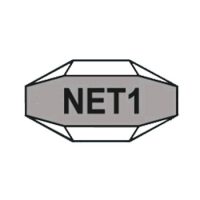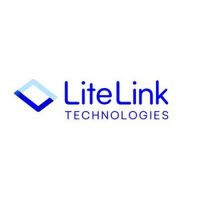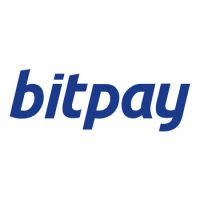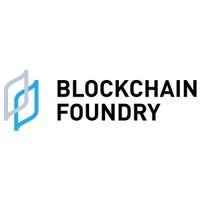Blockchain Press Releases
Bybit to Host Exclusive VIP Gathering Events in Taiwan Alongside ETH Taipei

DUBAI, UAE, March 8, 2024 /PRNewswire/ — Bybit, one of the world’s top three crypto exchanges by volume, today announced an exclusive VIP gathering event in Taipei on March 23, coinciding with ETH Taipei, the largest blockchain event in Taiwan.
This exclusive event offers Bybit VIP clients a unique opportunity to:
- Network with fellow industry leaders and Bybit representatives.
- Gain valuable insights from a first-hand report by the Bybit team.
- Be among the first to hear exciting announcements and future plans.
- Mingle with popular YouTubers and celebrities
- Enter a chance to win a share of a 660,000 NTD prize pool.
This event is exclusive to Bybit VIPs. Existing VIP clients can register through their dedicated VIP client manager. Not yet a Bybit VIP? Sign up between March 5th and March 20th to become a VIP and gain access to this event. Additionally, the first 88 new VIPs will receive the following:
- A Chivalries of Mantle NFT (floor price value)
- Exclusive Bybit merchandise
Ben Zhou, Co-founder and CEO of Bybit stated, “We are thrilled to host this exclusive gathering for our valued VIP clients during ETH Taipei week. This event embodies Bybit’s commitment to fostering a close-knit community and rewarding our VIPs for their continued trust and support.”
Bybit, through this exclusive event, demonstrates its dedication to supporting the local blockchain community and fostering meaningful connections with its VIP clients.
#Bybit #TheCryptoArk #BTCHalving
About Bybit
Bybit is one of the world’s top-three cryptocurrency exchanges by volume with 20 million users. Established in 2018, it offers a professional platform where crypto investors and traders can find an ultra-fast matching engine, 24/7 customer service, and multilingual community support. Bybit is a proud partner of Formula One’s reigning Constructors’ and Drivers’ champions: the Oracle Red Bull Racing team.
For more details about Bybit, please visit Bybit Press.
For media inquiries, please contact: [email protected]
For more information, please visit: https://www.bybit.com
For updates, please follow: Bybit’s Communities and Social Media
Discord | Facebook | Instagram | LinkedIn | Reddit | Telegram | TikTok | X | Youtube
Logo – https://mma.prnewswire.com/media/2267288/Logo.jpg
![]() View original content:https://www.prnewswire.co.uk/news-releases/bybit-to-host-exclusive-vip-gathering-events-in-taiwan-alongside-eth-taipei-302083883.html
View original content:https://www.prnewswire.co.uk/news-releases/bybit-to-host-exclusive-vip-gathering-events-in-taiwan-alongside-eth-taipei-302083883.html

Blockchain Press Releases
Bybit P2P: Three Ways to Win Rewards for Block Traders

DUBAI, UAE, May 9, 2025 /PRNewswire/ — Bybit, the world’s second-largest cryptocurrency exchange by trading volume, is pleased to renew its 10,000 USDT giveaway for P2P block trading users. The fresh round of Bybit P2P Block Trade Giveaway starts on May 8 until July 11, 2025 and comes with three tasks for specific user groups.
Exclusive on Bybit P2P, eligible users may register for the event, start their block trading journey, or become a P2P advertiser to unlock three prize pools.
Event period: May 8, 2025, 8AM UTC – Jul. 11, 2025, 11:59PM UTC
- New Users Exclusive: The first 20 new users will get to claim 175 USDT instantly by completing their first block trade.
- Existing Users: Users who trade 20,000 USDT or more in Block Trade (except existing Block Trade Advertisers) will get to share in a 3,500 USDT prize pool, with up to 100 USDT each in prizes up for grabs.
- Block Trade Advertisers Exclusive: A 3,000 USDT prize pool is reserved for Block Trade Advertisers—the first 20 eligible Block Trade Advertisers stand to earn 150 USDT when they trade at least 50,000 USDT.
Bybit’s P2P Block Trading platform enables private transactions of substantial volumes through Bybit’s intuitive interface. Customized for large digital asset purchases sales, the service streamlines regular order placements into a single order for bulk transactions, minimizing slippage and typically offering reduced fees on top of Bybit’s enterprise-grade security.
The marketplace presents earning potential for users with diverse cryptoholdings. With generous transaction limits ranging from 10,000 to 200,000 USDT per order, Bybit P2P Block Trading serves as a reliable solution for traders looking to scale up their P2P trading.
Rewards are on a first-come, first-served basis. Restrictions apply. For the detailed terms and conditions, users may visit: Bybit P2P Block Trade
#Bybit / #TheCryptoArk
About Bybit
Bybit is the world’s second-largest cryptocurrency exchange by trading volume, serving a global community of over 60 million users. Founded in 2018, Bybit is redefining openness in the decentralized world by creating a simpler, open and equal ecosystem for everyone. With a strong focus on Web3, Bybit partners strategically with leading blockchain protocols to provide robust infrastructure and drive on-chain innovation. Renowned for its secure custody, diverse marketplaces, intuitive user experience, and advanced blockchain tools, Bybit bridges the gap between TradFi and DeFi, empowering builders, creators, and enthusiasts to unlock the full potential of Web3. Discover the future of decentralized finance at Bybit.com.
For more details about Bybit, please visit Bybit Press
For media inquiries, please contact: [email protected]
For updates, please follow: Bybit’s Communities and Social Media
Discord | Facebook | Instagram | LinkedIn | Reddit | Telegram | TikTok | X | Youtube

Photo – https://mma.prnewswire.com/media/2683373/Bybit_P2P_Three_Ways_Win_Rewards_Block_Traders.jpg
Logo – https://mma.prnewswire.com/media/2267288/Logo.jpg
![]() View original content:https://www.prnewswire.co.uk/news-releases/bybit-p2p-three-ways-to-win-rewards-for-block-traders-302450952.html
View original content:https://www.prnewswire.co.uk/news-releases/bybit-p2p-three-ways-to-win-rewards-for-block-traders-302450952.html

Blockchain
Blocks & Headlines: Today in Blockchain – May 9, 2025 | Robinhood, Solana, Tether, China, Women in Web3

Today’s blockchain landscape pulses with innovation, expansion and strategic jockeying. From established trading platforms laying the groundwork for international tokenized US asset markets to fresh efforts empowering women in Web3, the industry is evolving at frantic pace. Solana-based tokenization pathways, China’s state-driven blockchain masterplan and Tether’s push onto new Layer-1 rails further underscore diversification. In this daily op-ed, we unpack five major developments—examining what they mean for DeFi growth, NFT marketplaces, regulatory contours and the ongoing quest for greater inclusivity in crypto.
1. Robinhood’s European Blockchain Trading Ambitions
News Summary
Robinhood Markets Inc. is reportedly constructing its own blockchain infrastructure to facilitate trading of U.S. equities and other assets in European markets. Insiders suggest the project seeks to leverage distributed-ledger technology for settlement efficiency, near-real-time clearing and reduced reliance on legacy central counterparties. The move signals Robinhood’s ambition to transcend its domestic brokerage roots and capture European retail and institutional order flow.
Key Details
-
Infrastructure Build: A private, permissioned ledger governed by Robinhood and selected counterparties.
-
Asset Scope: U.S. equities, ETFs and potentially tokenized debt instruments.
-
Regulatory Interface: Engagements with the U.K. Financial Conduct Authority (FCA) and European Securities and Markets Authority (ESMA) to align on custody and market-making rules.
-
Timeline: Internal pilots slated for Q4 2025, with public rollout in mid-2026.
Analysis & Opinion
Robinhood’s pivot underscores a broader industry trend: exchanges and brokerages striving to “own the rails” rather than simply interface with existing clearinghouses. By internalizing settlement on a bespoke blockchain, Robinhood hopes to slash settlement times from T+2 to near-instant, a boon for liquidity providers and high-frequency traders. However, risks include the complexity of cross-border regulatory compliance and the operational challenge of maintaining robust on-chain and off-chain reconciliations.
From a DeFi convergence standpoint, Robinhood’s ledger could bridge traditional and decentralized finance, enabling tokenized margin lending and programmable corporate actions directly on-chain. Should Robinhood open permission to DeFi protocols, we may witness new hybrid liquidity pools that blend CEX order books with AMM liquidity. This would mark a milestone in mainstream DeFi adoption—and potentially pressure incumbents like Nasdaq to innovate their own on-chain settlement layers.
Source: Bloomberg
2. Women in Web3: Cultivating Greater Gender Diversity
News Summary
A recent deep-dive from Cointelegraph spotlights the persistent gender gap in blockchain and crypto. Despite Web3’s ethos of decentralization, women represent less than 20 percent of crypto investors and under 10 percent of core development teams. The article outlines initiatives—from targeted grants and incubation programs to mentorship networks—aimed at lowering barriers and attracting more female talent.
Key Details
-
Current Statistics: Women account for approximately 17 percent of crypto traders globally; in development, the share dips below 8 percent.
-
Notable Initiatives:
-
Women in Blockchain Fund: USD 50 million allocated for early-stage female founders.
-
Global Web3 Sisters Network: Mentorship platform pairing novices with veteran executives.
-
University Partnerships: Scholarships for women studying blockchain engineering and cryptography.
-
Analysis & Opinion
Web3’s promise of equal-opportunity innovation rings hollow if half the population remains sidelined. Heightened grant funding and mentorship can help, but systemic change requires cultural shifts within DAOs, core teams and investor circles. Projects and protocols must adopt policies—like blind code reviews, diversity hiring quotas and inclusive governance frameworks—to ensure sustainable participation.
Moreover, as the industry grapples with regulatory scrutiny, diverse leadership can foster better risk management and community trust. Women leaders have often been at the forefront of compliance, ethics and consumer protection—even in traditional finance—qualities sorely needed in crypto’s maturing phase. Token projects that embed gender-diverse advisory boards may see stronger reputational profiles and wider community buy-in.
Source: Cointelegraph
3. SOL Strategies: Tokenizing Shares on Solana
News Summary
SOL Strategies, a financial-services startup, is exploring a pathway to tokenize private and publicly traded shares on the Solana blockchain. Their recently filed whitepaper proposes a framework where equity is represented as SPL tokens, enabling fractional ownership, 24/7 trading and programmable dividend distributions.
Key Details
-
Token Standard: Extension of Solana Program Library (SPL) with “Equity Token” schema.
-
Custody Model: Licensed custodian holds underlying shares; token holders have legal claim via smart-contract link.
-
Compliance Layer: On-chain KYC/AML middleware to restrict token transfers to approved wallets.
-
Pilot Partners: Early engagements with two mid-cap European tech firms eyeing capital-raising via tokenization.
Analysis & Opinion
Tokenized equity stands to revolutionize capital markets by lowering minimum investment thresholds and unlocking global liquidity. On Solana, with its sub-second finality and low fees, fractional shares could trade seamlessly—outpacing Ethereum’s scalability challenges. Yet the critical hurdle lies in regulatory acceptance: will securities regulators view these tokens as bona fide equity or as unregistered securities?
SOL Strategies’ integrated custody approach could mollify regulators, replicating existing T+2 standards while enabling T+0 settlement on-chain. Should they secure regulatory sandbox approvals in the U.K. or Singapore, other blockchains—like Stellar and Polkadot—may race to develop similar tokenization toolkits. For DeFi protocols, tokenized equities could become collateral in lending pools, further intertwining traditional and decentralized finance.
Source: Newsfile Corp.
4. China’s Blockchain Playbook: Infrastructure, Influence & New Frontiers
News Summary
The Center for Strategic and International Studies (CSIS) published an extensive analysis of China’s state-driven blockchain strategy. Beyond its digital yuan rollout, Beijing is investing in cross-border infrastructure, influencing global standards bodies and forging Belt and Road blockchain corridors across Asia, Africa and Latin America.
Key Details
-
Key Initiatives:
-
BSN 2.0: Blueprint for national and international consortium chains.
-
International Standards: Active lobbying in ISO/TC 307 for governance models favoring state-actors.
-
Tech Diplomacy: Blockchain MOUs with Pakistan, Indonesia and several African union members.
-
-
Strategic Goals: Extend digital yuan acceptance, export Chinese ledger tech, shape global governance.
Analysis & Opinion
China’s multi-pronged approach signals blockchain’s emergence as a theater of geopolitical competition. By undercutting SWIFT dependency and offering turnkey consortium-chain solutions, Beijing enhances its financial influence in Belt and Road countries. Western governments and multinationals must navigate this blockchain bifurcation—between open public rails and permissioned state-backed consortia.
For crypto projects, the CSIS report offers both caution and opportunity. While the digital yuan may corner state-aligned corridors, decentralized networks remain resilient by design. Projects focusing on interoperability—such as Polkadot bridges and Cosmos IBC—can link fragmented chains and preserve open value transfer. Investors should monitor on-chain metrics in emerging markets, as Chinese-backed consortium chains gain traction in cross-border trade finance.
Source: CSIS
5. Tether Expands Stablecoin Reach to 196 Million Users via Kaia
News Summary
Tether has launched USDT on the Kaia blockchain, bringing its flagship stablecoin to Kaia’s user base of approximately 196 million. Kaia, a burgeoning Layer-1 optimized for high-throughput mobile applications, opens new corridors for USDT in gaming, remittances and micro-trading in emerging markets.
Key Details
-
Technical Integration: USDT issued as a native Kaia token, supported by Tether’s reserve-backing audit framework.
-
User Impact: Near-zero fees for micro-transactions; sub-second confirmation times even on mobile networks.
-
Partnership Scope: Integration with Kaia’s wallet SDK and gaming marketplace; joint launch of an educational DApp for fiat-on-ramp literacy.
Analysis & Opinion
By deploying on Kaia, Tether diversifies its blockchain footprint beyond Ethereum, Tron and Solana, underscoring a multi-chain thesis for stablecoin ubiquity. Emerging-market users—often plagued by volatile local currencies—stand to benefit immensely from a mobile-first, low-cost remittance rail. Moreover, Kaia’s developer incentives may spawn DeFi lending dApps collateralized by USDT, fueling localized credit markets.
Yet healthy competition among blockchains for stablecoin volume could concentrate risk: reserve transparency, network stability and regulatory compliance will differentiate winners. Tether’s public attestations and reserve audits are critical, but as US regulators intensify scrutiny on stablecoin giants, projects deploying on smaller chains may face fresh legal complexities around money-transmission licensing.
Source: Bitcoin.com
Conclusion & Key Takeaways
-
Institutional On-ramp Acceleration: Robinhood’s European chain signals major brokerages view blockchain as core infrastructure—not mere gadget.
-
Inclusivity Imperative: Women’s underrepresentation remains a blindspot; targeted grants and cultural reforms are needed for equal Web3 participation.
-
Tokenization Tide: Solana’s high-speed rails may host the next wave of equity tokens, bridging capital markets and DeFi.
-
Geopolitical Battlegrounds: China’s consortium chains and digital-yuan corridors illustrate how blockchain is reshaping global influence.
-
Stablecoin Multichain Strategy: Tether’s Kaia integration reflects the logic of diversifying rails to reach underserved, mobile-first users.
As blockchain advances, the interplay between technological innovation, regulatory frameworks and social inclusion will define whether the next chapter of crypto fulfills its vision of open, equitable finance—or replicates old hierarchies in digital garb. Today’s headlines underscore that the path forward lies in cross-chain interoperability, proactive policy-shaping, and a relentless focus on broadening the community that stewards and benefits from these transformative networks.
The post Blocks & Headlines: Today in Blockchain – May 9, 2025 | Robinhood, Solana, Tether, China, Women in Web3 appeared first on News, Events, Advertising Options.
Blockchain Press Releases
MEXC Lists USD1, Accelerating Global Stablecoin Innovation with World Liberty Financial

VICTORIA, Seychelles, May 8, 2025 /PRNewswire/ — MEXC, a leading global cryptocurrency exchange, announced that it will list World Liberty Financial USD (USD1) in the Innovation Zone on May 9, 2025 (UTC). The USD1/USDT trading pair will also open at 08:00 on May 8, 2025 (UTC), and the MEXC Convert feature will be available from 09:00 on May 8, 2025 (UTC), offering users a seamless asset conversion experience. This listing expands the range of digital assets on the platform and further demonstrates MEXC’s commitment to advancing the global stablecoin ecosystem.
USD1: A New Era in Stablecoins and Financial Transparency
USD1 is World Liberty Financial (WLFI)’s stablecoin that provides secure and transparent digital asset services for global users. The stablecoin is backed 1:1 by the US dollar, with its reserve assets custodied by BitGo, held and subject to regular audits by third-party accounting firms to ensure transparency and stability. Currently, USD1 is deployed on both Ethereum and BNB Chain, with plans to expand to additional blockchains in the future to enhance interoperability.
Furthermore, USD1 has made significant strides in the decentralized finance (DeFi) ecosystem. For example, ListaDAO has launched a USD1 lending vault on BNB Chain, providing liquidity support for 20 million USD1. Renowned market maker DWF Labs has also deployed USD1 liquidity across multiple platforms, further enhancing its availability and market depth. According to the data from CoinMarketCap, USD1’s market capitalization has surpassed USD 2.12 billion, demonstrating strong market demand.
Special Promotion to Celebrate the Listing
To celebrate the successful listing of USD1, MEXC is launching a series of special offers to thank its users for their support. Starting May 8, 2025, at 08:00 (UTC), users can enjoy the following benefits:
- Zero Trading Fees: The USD1/USDT spot trading pair will have 0 trading fees.
- Zero Withdrawal Fees: Users will enjoy 0 withdrawal fees when withdrawing USD1.
MEXC Drives the Evolution of Stablecoins Through Ecosystem Empowerment
As a leading global cryptocurrency exchange, MEXC has earned the trust of 36 million users across 170+ countries worldwide, thanks to its fast token listing process, diverse asset offerings, deep liquidity, and robust security. At the same time, MEXC continues to empower quality projects and partners, actively promoting the healthy development of the global digital asset and stablecoin ecosystem.
Looking Ahead: A Shared Vision for the Future of Stablecoins
MEXC’s listing partnership with World Liberty Financial further drives innovation in the development of stablecoins. Looking ahead, MEXC will continue to strengthen its support for stablecoin projects, promoting the widespread adoption of stablecoins globally. At the same time, the platform will keep iterating its products and services to provide users with a more secure and seamless trading experience.
About MEXC
Founded in 2018, MEXC is committed to being “Your Easiest Way to Crypto.” Serving over 36 million users across 170+ countries, MEXC is known for its broad selection of trending tokens, everyday airdrop opportunities, and low trading fees. Our user-friendly platform is designed to support both new traders and experienced investors, offering secure and efficient access to digital assets. MEXC prioritizes simplicity and innovation, making crypto trading more accessible and rewarding.
MEXC Official Website| X | Telegram |How to Sign Up on MEXC
Risk Disclaimer:
The information provided in this article regarding cryptocurrencies does not constitute investment advice. Given the highly volatile nature of the cryptocurrency market, investors are encouraged to carefully assess market fluctuations, the fundamentals of projects, and potential financial risks before making any trading decisions.

Photo – https://mma.prnewswire.com/media/2682552/1920×1080.jpg
Logo – https://mma.prnewswire.com/media/2668118/MEXC_new_Logo.jpg
![]() View original content:https://www.prnewswire.co.uk/news-releases/mexc-lists-usd1-accelerating-global-stablecoin-innovation-with-world-liberty-financial-302450296.html
View original content:https://www.prnewswire.co.uk/news-releases/mexc-lists-usd1-accelerating-global-stablecoin-innovation-with-world-liberty-financial-302450296.html

-
Blockchain7 days ago
HODL 2025: Blockchain’s Brightest Minds. All in Dubai
-

 Blockchain Press Releases7 days ago
Blockchain Press Releases7 days agoInterlace Debuts at Token2049 to Accelerate Web2-Web3 Integration Across MENA
-

 Blockchain Press Releases7 days ago
Blockchain Press Releases7 days agoFrom Exchange to Ecosystem Builder: MEXC Celebrates 7th Anniversary at TOKEN2049 Dubai with $300M Ecosystem Development Fund Launch
-

 Blockchain Press Releases3 days ago
Blockchain Press Releases3 days agoHTX Premieres USD1 Stablecoin Globally, Partnering with World Liberty Financial to Forge a New Era of Decentralized Economy
-

 Blockchain Press Releases7 days ago
Blockchain Press Releases7 days agoBybit and St. Paul American Scholars School Furthers Partnership Commitment in Bybit’s HQ Visit
-

 Blockchain6 days ago
Blockchain6 days agoUnitedStaking.com Launches Advanced Crypto Staking Platform with Global Reach and Real-World Impact
-

 Blockchain Press Releases3 days ago
Blockchain Press Releases3 days agoJuCoin made a global impact at TOKEN2049 Dubai, advancing its ecosystem with the “Peak Experience” vision and JuChain’s robust tech.
-
Blockchain2 days ago
Colb Asset SA Raises $7.3 Million in Oversubscribed Round to Bring Pre-IPO Giants to Blockchain























